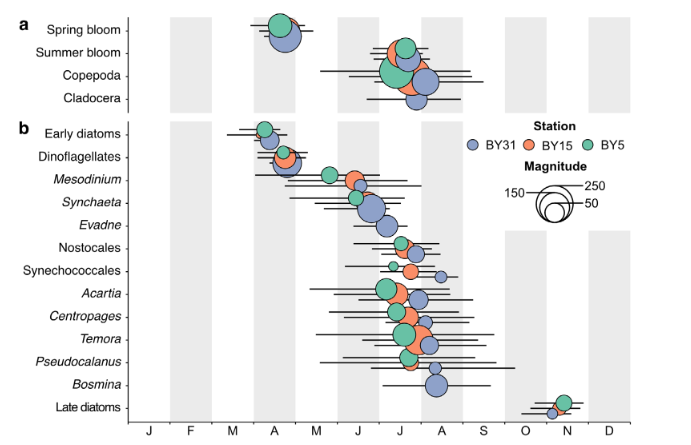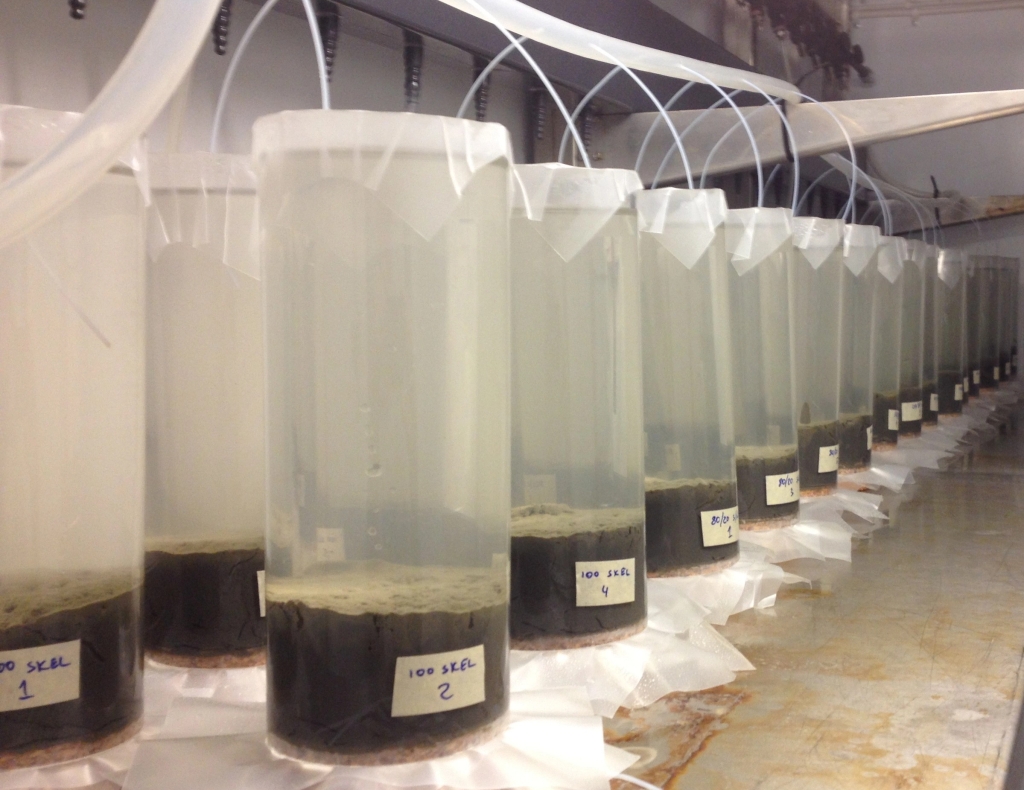Here we analyzed 15 yr of monitoring data to identify trends and drivers of timing and magnitude of bloom-forming phytoplankton and diverse zooplankton taxa throughout the season in the central Baltic Sea.
We show that the timings of phytoplankton blooms advance, whereas crustacean zooplankton seasonal timings remain constant. This increasing offset with the spring bloom is linked to the decline of Pseudocalanus, a key copepod sustaining pelagic fish production. The majority of copepod and cladoceran taxa, however, are co-occurring with summer blooms. We also find new developing fall blooms, fueling secondary production later in the season. Our study highlights that response to climate change differs within and between functional groups, stressing the importance of investigating plankton phenologies over the entire annual cycle in pelagic systems.
See also SU’s press release:
English: Earlier spring bloom disrupt the balance of the Baltic Sea
Swedish: Allt tidigare algblomningar rubbar den känsliga balansen i Östersjön
The full article is available here: Plankton blooms over the annual cycle shape trophic interactions under climate change. Limnology and Oceanography Letters

Plankton succession in the central Baltic Sea from 2008 to 2022. Seasonal timing, peak magnitude and bloom duration of (a) total spring and summer phytoplankton and total copepod and cladoceran biomass, and (b) dominating phytoplankton and zooplankton taxa. Point positions (x-axis) correspond to the average peak timing (week), point sizes to the average peak magnitude (zooplankton: μg L−1; phytoplankton: μg C L−1) and the horizontal bars to the average initiation and termination (week) of their respective growing seasons.
